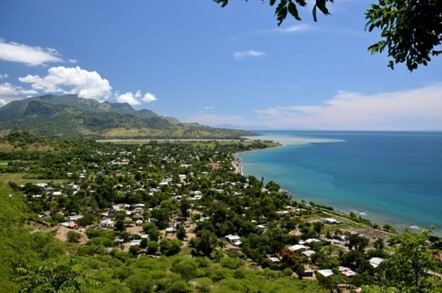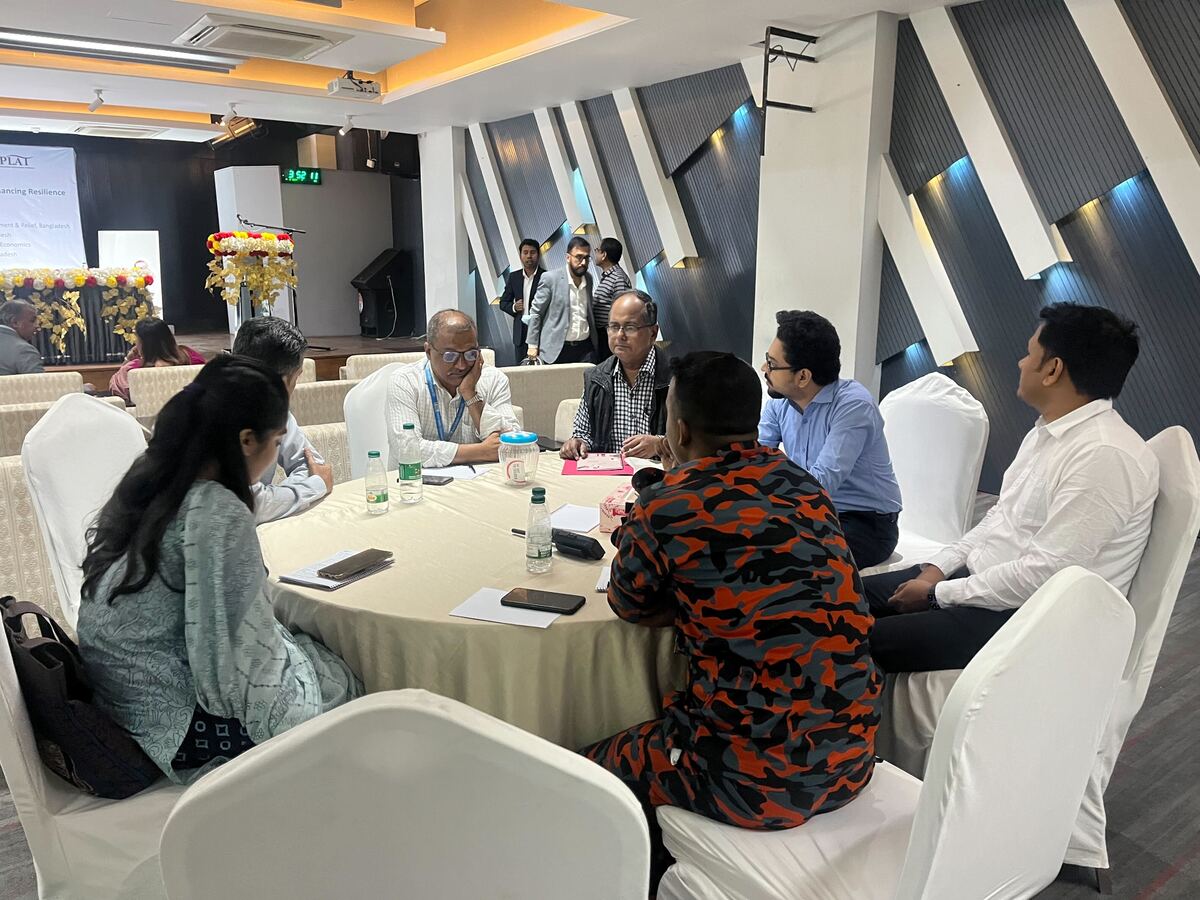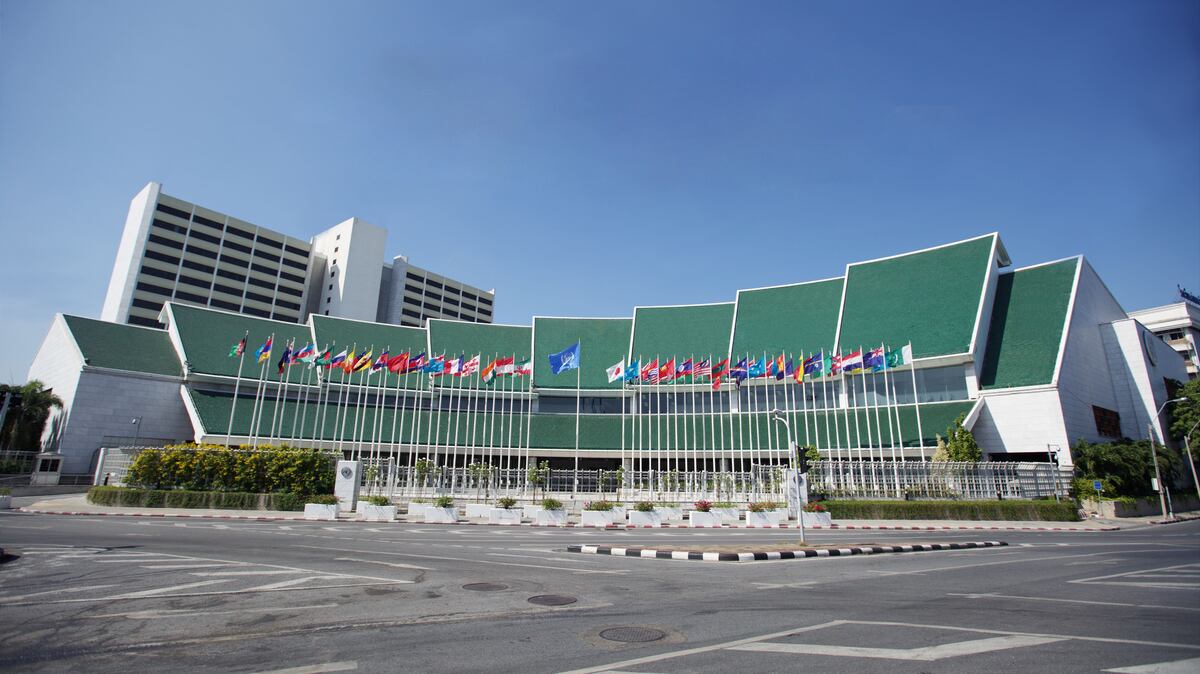
Photo: Trevar Skillicorn-Chilver from Unsplash

Photo: Bryan Ross from Pixabay
BASIC INFORMATION
| Source |
Timor-Leste's National Adaptation Plan: Addressing climate risks and building climate resilience |
|---|---|
| Date posted | March 31, 2021 |
| Version | 1 |
| Periods | 2020 - 2030 |
Goals
The NAP for Timor-Leste builds on these objectives and is designed to fulfill the following functions:
- The NAP will serve as the national policy instrument for coordinating and driving actions of all actors and stakeholders in pursuit of adaptation goals and outcomes.
- The NAP will guide future assessment of progress and reporting on adaptation.
- The NAP communicates the importance of addressing climate change, to all stakeholders nationally and internationally, through adaptation by showing key impacts already being felt and what is likely to be felt under climate projections for the country in the future.
- The long-term process that is in place and has supported the formulation and implementation of the NAP will serve as the main national programme and coordinating mechanism of adaptation in the country and will seek further support through the GCF for maintaining this process and for implementation of the NAP, complemented by other sources of financing.
- The NAP will serve as the umbrella plan of action for adaptation, embracing all other relevant national plans, sectoral strategies and plans at various subnational levels.
- The NAP contains several essential programmes and projects that have been identified based on available assessments and past work through the GCF Country Programme and the NDC. An updated NAP will be produced with revised priorities when new and additional vulnerability and risk assessments are completed.
- The NAP will serve as the umbrella plan of action for adaptation, embracing all other relevant national plans, sectoral strategies and plans at various subnational levels, including a focus on vulnerable groups (women and youth), and links to traditional/indigenous systems through the Tarabandu.
- The NAP will serve as the Adaptation Communication to the Paris Agreement.
Stakeholder Engagement
Demography, Gender, and Social Inclusion Considerations
The NAP and its recommended measures will incorporate the differential impacts of climate change on men, women, children, elderly people, and other potentially vulnerable groups.
Youth Engagement
The NAP will identify specific opportunities for youth to be mobilized as climate change ambassadors for long-term climate-resilient development.
Whole-of-Government Approach
The NAP will identify sustainable financial packages and resources to ensure optimal implementation of identified priorities by relevant stakeholders.
Community-Based Adaptation Approach
The NAP will identify and implement community-centric and community-driven approaches in which communities are empowered to build their adaptive capacity and enhance adaptation mechanisms for long term climate resilience, including through traditional approaches.
Risk Assessment
Climate risk assessment (current trend, future projections)
The country is divided into three different climate zones determined by precipitation and temperature characteristics (UNDP 2018b).
Current trend
Atmospheric temperatures: Sporadic meteorological data makes establishing accurate historical trends for Timor-Leste difficult, but the data that does exist suggests that average temperatures in the country have been increasing by .16°C per decade since 1950.
Precipitation: Overall there has been an increase in average annual rainfall by 6.4mm per decade between 1901-2009, however rainfall trends have decreased in much of the country since 1990 (USAID 2017).
Sea surface temperature and ocean chemistry: There are indications of a gradual warming trend in sea surface temperatures since the 1970s (approximately .16°C per decade on average with an increasing trend).
Tropical Cyclones: Tropical cyclones have affected the country on multiple occasions, but overall losses and damage have been limited.
Future projection
Atmospheric temperatures: In the future annual mean temperatures and extremely high daily temperatures will continue to rise, regardless of future emissions scenarios. The temperature is projected to increase by 4-1.0°C by 2030, which will be accompanied by an increase in the number of hot days and warm nights (MCIE 2016). By 2050 the increase in temperatures is expected to reach 1.25°- 1.75°C, with an increase in heat waves (USAID 2017).
Precipitation: In general, it is predicted that there will be a decrease in dry season rainfall and an increase in wet season rainfall, with extreme rainfall days occurring more frequently (MCIE 2016). Overall annual average rainfall may increase 4-10% by 2050 with an increase of up to 100-120mm in coastal areas, and 260-300mm in the mountains (USAID 2017).
Sea surface temperature and ocean chemistry: Projections indicate that the annual average sea surface temperatures will continue to increase in the future. If the trend continues, the cumulative increase in average sea surface temperatures will reach 1.6 to 1.8°C by 2080, and 2.3°C by 2100 (UNDP 2018b).
Acidification of the ocean will continue to increase over the course of the 21st century driven by the uptake of carbon dioxide. As a result, the aragonite saturation state will reach values below 3.5 by 2025, negatively impacting the development of corals (AMB and CSIRO 2011). Impacts on reefs are likely to be compounded by other stressors, including storm damage and fishing pressures, but the overall risk of coral bleaching is expected to increase (PACCSAPP 2015).
Tropical Cyclones: Future projections suggest that there will be a decrease in the frequency of tropical cyclones impacting Timor-Leste, but an increase in intensity, meaning that wind speeds and precipitation from the cyclones that do occur will be greater, affecting larger areas (PACCSAP 2015).
Sea level rise (SLR): Sea level is expected to continue to rise. Based on satellite altimetry data, the rate of SLR is higher along the south coast than it is along the north coast. This is due to a number of local conditions, including wind patterns and ocean currents, which affect the local sea level. On average, the rate of SLR surrounding the country is around 5.5mm/year. Assuming that the rate is linear in the future, sea level in the region would increase by around 50mm by 2100, as most projections indicate that the rate of SLR will increase in the future.
Patterns of variability (ENSO and other oscillations): While it is certain that ENSO and other oscillations will continue to shape climate conditions in Timor-Leste into the future, there is little consensus on whether there will be a change in intensity or frequency of these events. This uncertainty is not specific to Timor-Leste; there is no global consensus on if and how ENSO and other oscillations will change in the future.
data sources
UNDP. 2018b. National Coastal Vulnerability Assessment and Designing of Integrated Coastal Management and Adaptation Strategic Plan for Timor-Leste: Coastal Vulnerability Assessment Report. UNDP. 161pp.
Current trend
Precipitation:
USAID. 2017. Climate Risk Profile Timor-Leste Fact Sheet. USAID. 5pp.
Future projection
Atmospheric temperatures / Precipitation:
Ministry of Commerce, Industry, and Environment (MCIE). 2016. Intended Nationally Determined Contribution to the UNFCCC. GoDRTL. 32pp.
USAID. 2017. Climate Risk Profile Timor-Leste Fact Sheet. USAID. 5pp.
Sea surface temperature and ocean chemistry:
UNDP. 2018b. National Coastal Vulnerability Assessment and Designing of Integrated Coastal Management and Adaptation Strategic Plan for Timor-Leste: Coastal Vulnerability Assessment Report. UNDP. 161pp.
Australian Bureau of Meteorology (ABM), and CSIRO, 2011: Climate Change in the Pacific: Scientific Assessment and New Research Volume 2: Country Reports.
Pacific-Australia Climate Change Science and Adaptation Planning Program (PACCSAPP). 2015. Current and Future Climate of Timor-Leste. CSIRO. 9pp.
large-scale gridded sea surface temperature datasets (HadlSST, SadSST2, ERSST and Kaplan Extended SST V2)
Tropical Cyclones:
Pacific-Australia Climate Change Science and Adaptation Planning Program (PACCSAPP). 2015. Current and Future Climate of Timor-Leste. CSIRO. 9pp.
Projections and Downscaling Conducted in Support of Second National Communication: Global climate model (GCM) projections have been tailored to the geographic region encompassing the country of Timor-Leste using both dynamical and statistical downscaling techniques.
Planning
Priority sectors
- Infrastructure (4 programmes)
- Biodiversity and Ecosystem (2 programmes)
- Health Sector (2 programmes)
- Agriculture Sector (6 programmes)
- Water Sector (4 programmes)
- DRR (2 programmes)
- Tourism (2 programmes)
DRR
Though the country is one of the world’s most vulnerable to natural disasters due to high risk of earthquakes, tsunamis, cyclones, and heavy rainfall, due to years of conflict, there is a lack of credible datasets in Timor-Leste regarding disasters and impacts. The International Disaster Database (emdat.be) reports that between 1990 and 2014, floods were responsible for 71.4% of disasters, with droughts and storms each responsible for 14.3% of disasters recorded. During this period, flooding was responsible for all reported mortality.
The National Directorate for Disaster Risk Management (NDDRM), which is responsible for developing policy and plans based on the four phases of the disaster cycle, is currently finalizing a new national policy for disaster risk management which will integrate the Sendai Framework as well as climate change considerations. As the NAP process evolves, it will be important to establish and maintain close coordination with the NDDRM and the new Policy.
Adaptation priority programs in the DRR sector include (i) enhancing community-level integration of DRR and CCA and (ii) strengthening national capacities for climate change responsive disaster risk reduction and disaster risk management.
NbS / EbA
Timor-Leste consists of five generalized ecological zones (GoDRTL 2010), each of which should be considered in ecosystem-based adaptation approaches: Marine and coastal zone, Arid lowland zone, Mountainous zone, Highland plains zones, and Wetlands and lakes.
As evidenced by the adaptation priorities identified in this NAP, there is potential for significant environmental co-benefits from investments in adaptation, as well as opportunities to exploit synergies between building resilience to climate change and addressing environmental and resource management challenges. Therefore, wherever possible, Timor-Leste‘s adaptation response should include ecosystem-based adaptation (EbA) and other nature-based approaches.
Adaptation priorities programs of Biodiversity and Ecosystem include (i) building human and institutional capacities for ecosystem-based adaptation and (ii) incorporating ecosystem-based adaptation into planning and regulatory frameworks.
Implementation
Implementation structure
High-Level Decision-Making Body: The Council of Ministers is the highest decision-making authority in addressing implementation of national adaptation priorities as well as mainstreaming climate change adaptation into sectoral policies and plans. Therefore, the Council of Ministers will delegate, as per its Organic Law, to the responsible Ministry for the Environment to oversee the development and implementation of NAP. A regulatory body shall be created to steer and enforce the leading role of NAP at all level, across government institutions.
High-Level Operational Body: The Secretary of State for the Environment (SSE) under the minister of Economic Affairs is responsible for all climate change related issues, including overseeing formulation and implementation of the NAP. The SSE is mandated by the Council of Ministers through the guidance of the Ministry of Economic Affairs to coordinate the implementation of the NAP at the policy level. The SSE will act as the interim high-level operational body for guiding NAP implementation. The SSE takes responsibility for implementation of the NAP at policy level, including programs and actions as well as monitoring and evaluation, with technical support from the National Directorate for Climate Change, within the Secretariat of State for Environment. The SSE will brief the Council of Ministers on the state of the implementation of the NAP and seek guidance and direction from the Council.
Technical Coordinating Body / Interim Secretariat: The National Directorate for Climate Change (NDCC) will act as the interim technical coordinating body and secretariat to coordinate the implementation of the NAP over the short term. The NDCC will be supported by the Climate Change Working Group (CCWG) under the NDCC with membership from all related ministries, agencies, NGOs, FBOs, academic institutions, private sector representatives and other relevant stakeholders. The CCWG will be the primary mechanism for coordination and consultation with stakeholders in implementing the NAP priorities undertaken by government entities, agencies, civil society, and private sector actors. The CCWG was first officially recognized by the GoDRTL in January 2017 by a Ministerial Decree. The CCWG will meet regularly every three months and will convene more frequently on an ad-hoc basis if necessary.
Fund mobilization:
The Secretariat of State for Environment is responsible for mobilizing funding from international sources and will ensure, in strict coordination with the Ministry of Finance, the release of funds from international organizations for approved adaptation priorities. The Ministry of Finance will also be responsible for mobilizing funding from both domestic and as well as international sources for the implementation of NAP priorities.
–
The implementation plan for the NAP is divided into three timeframes: near-term (2020-2022), medium-term (2023-2025), and long-term (2026-2030).
M&E
M&E Implementation status
Formulation of a monitoring, evaluation, reporting and learning (MERL) framework is planned to be addressed in the revised NAP.
KPI and other indicators
N/A
Changes/additions to the updated version of the document, if any
N/A
Plan for review and updating
It is anticipated that a revised NAP will be submitted a few years from 2021 after in-depth assessments under the GCF NAP Readiness Support (2020-2022).
Status of supports by international organizations, if any
Green climate Fund (GCF), GEF-funded joint UNDP-UNEP National Adaptation Plan Global Support Programme (NAP-GSP)
Related Information
- National Disaster Risk Management Policy (2008)
- Environmental Basic Law (Environmental Framework Law 26/2012)
- National Strategic Development Plan (2011-2030)
- Roadmap for the implementation of the 2030 agenda and the SDGs
- The National Biodiversity Strategy and Action Plan of Timor-Leste (2011-2020)
- Water Sector Assessment and Roadmap (2018)
- Timor-Leste GCF Country Programme (2019)
- National Adaptation Plan in Focus: lessons from Timor-Leste (UNDP)
- How Timor-Leste Is Using the National Adaptation Plan (NAP) Process to Scale Up Ecosystem-Based Adaptation (EbA) (NAP Global Network)
KEYWORDS
- # Adaptation Policy
- # Agriculture
- # Biodiversity/Ecosystem
- # Coastal Areas
- # Energy
- # Fisheries
- # Forests/Forestry
- # Human Health
- # Life of Citizenry and Urban Life
- # Local Communities
- # Natural Disasters
- # Tourism
- # Water Environment/Water Resources
- # Adaptation Action/implementation
- # Adaptation Funding/Finance
- # Adaptation Planning/Policy
- # Capacity Building
- # Climate Projection
- # Disaster Prevention/Disaster Mitigation
- # Impact Assessment/Risk Assessment
- # International Cooperation
- # Locally-led Adaptation
- # Nature-based Solutions
- # Asia
- # Timor-Leste




